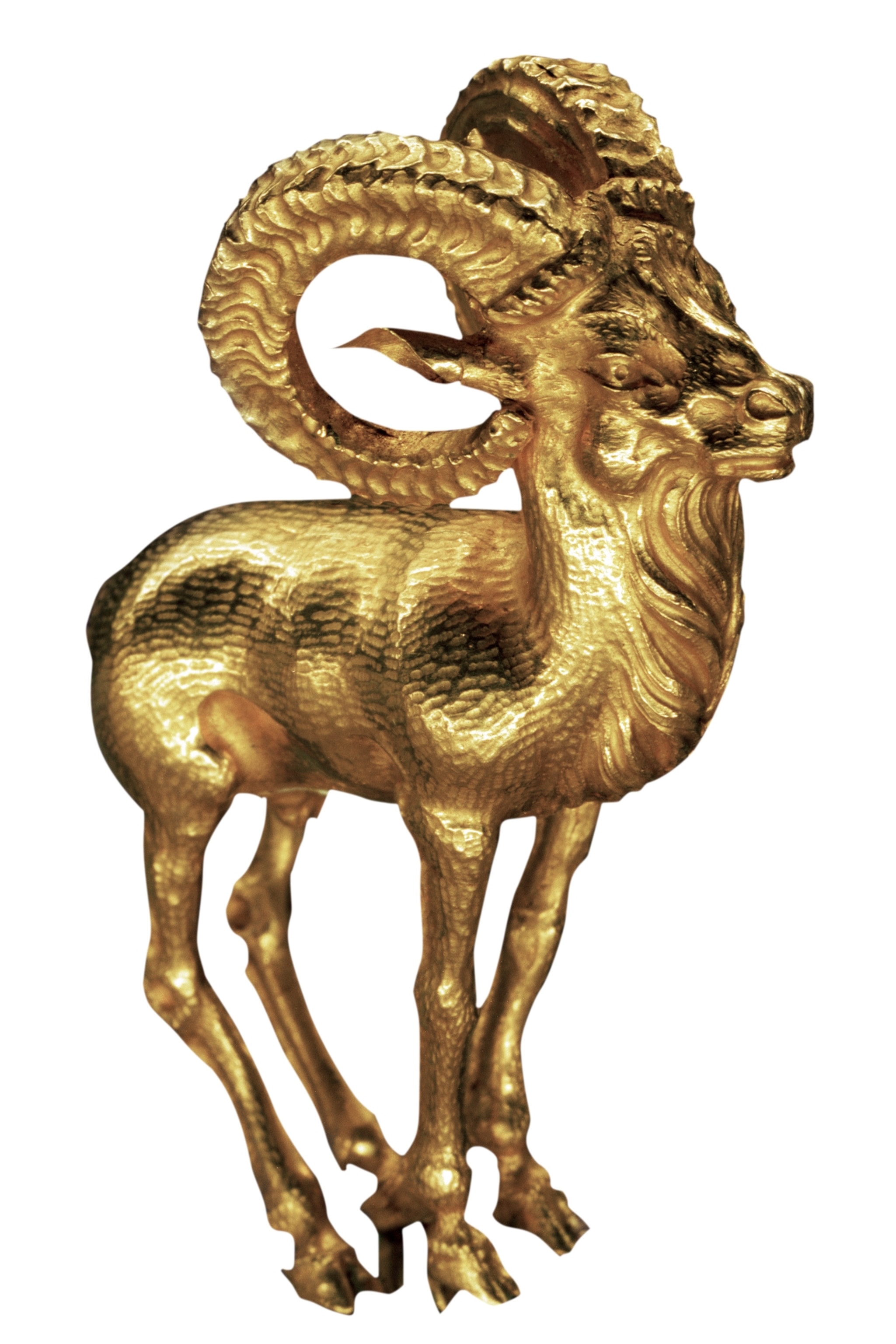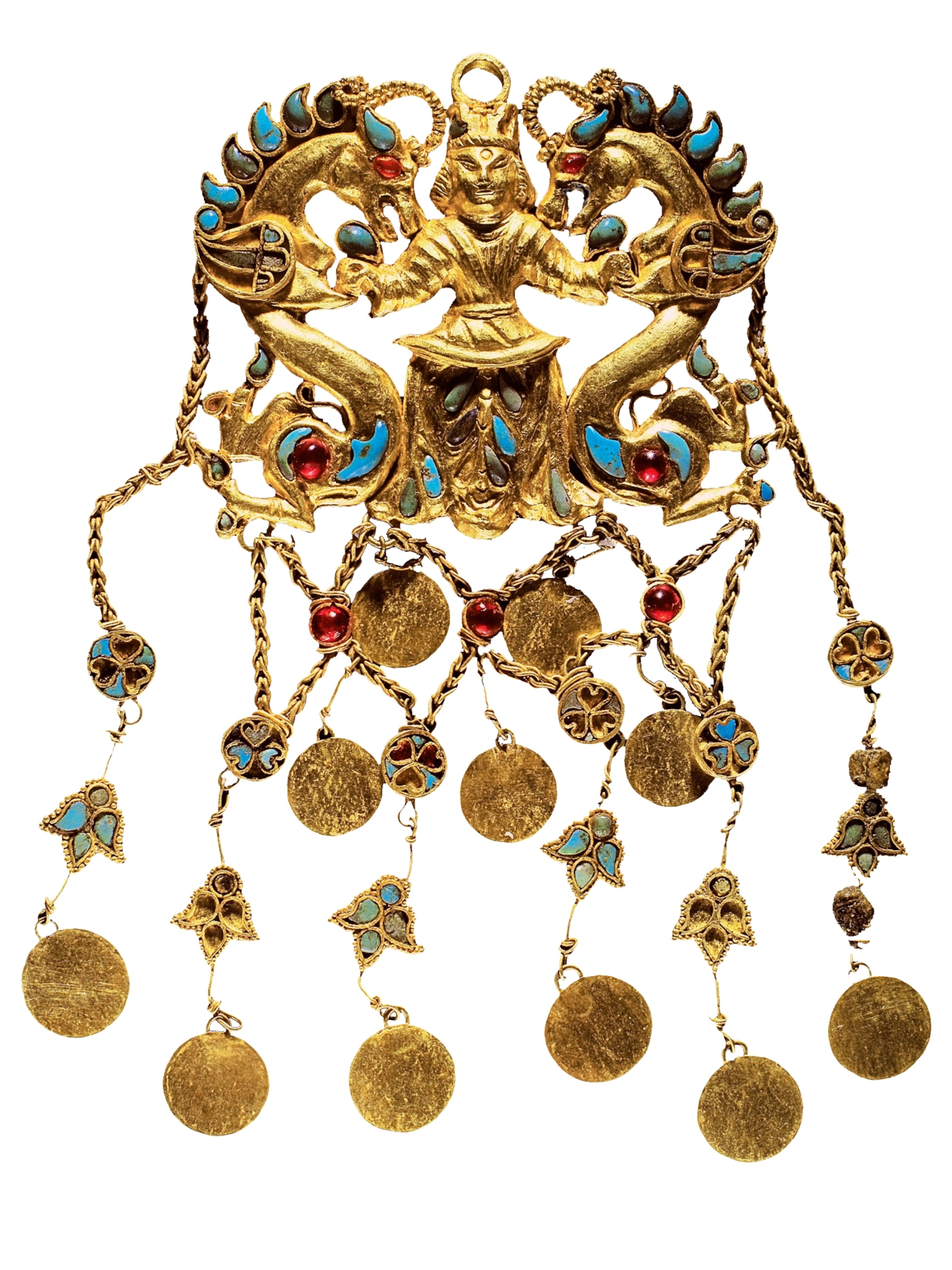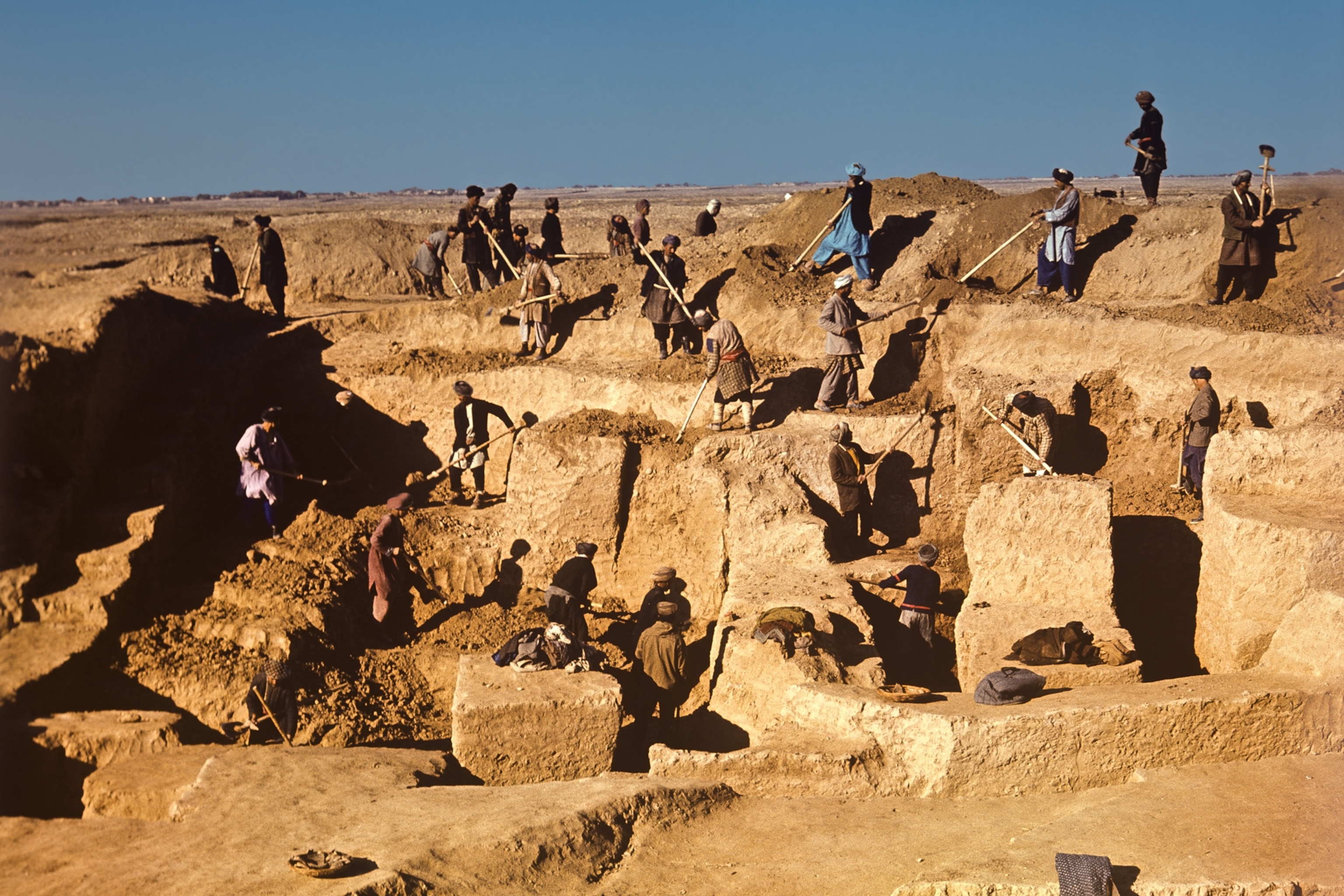
Inside the Quest to Save Afghanistan’s Bactrian Gold
A trove of glittering artifacts unearthed in Afghanistan in 1978 revealed the stunning cultural diversity of the Silk Road in the first century A.D. A decade later, as conflict engulfed Afghanistan, a top secret plan was launched to keep the treasure safely hidden from looters.
Discovered against the turbulent backdrop of the Cold War, the Tillya Tepe treasure is a glittering assemblage consisting of thousands of golden pieces from all over the ancient world. In 1978, a year before the Soviet Union invaded Afghanistan, Russian archaeologist Viktor Ivanovich Sarianidi began digging at the Tillya Tepe site in northern Afghanistan, which archaeologists had recently identified as of potential historical interest.
Meaning “golden hill,” Tillya Tepe is located in Bactria, an ancient region located in what is now part of Afghanistan, Uzbekistan, and Tajikistan. It is thought the hoard was buried by Scythian or Chinese nomads at the beginning of the Christian era. Sarianidi was an expert in the rich Bronze Age civilizations of Bactria, later occupied by Alexander the Great in the fourth century B.C. Later, as Rome rose in the west, Bactria was fought over by peoples from India, China, and Iran, each adding new cultural elements to the Hellenistic culture established in the region by Alexander.
Sarianidi knew that an area that had been conquered and reconquered by so many peoples was likely to be rich in artifacts from their many cultures. Yet even this experienced scholar was unprepared for the dazzling array of riches he unearthed, which came to be known as the Bactrian gold.
Timeline
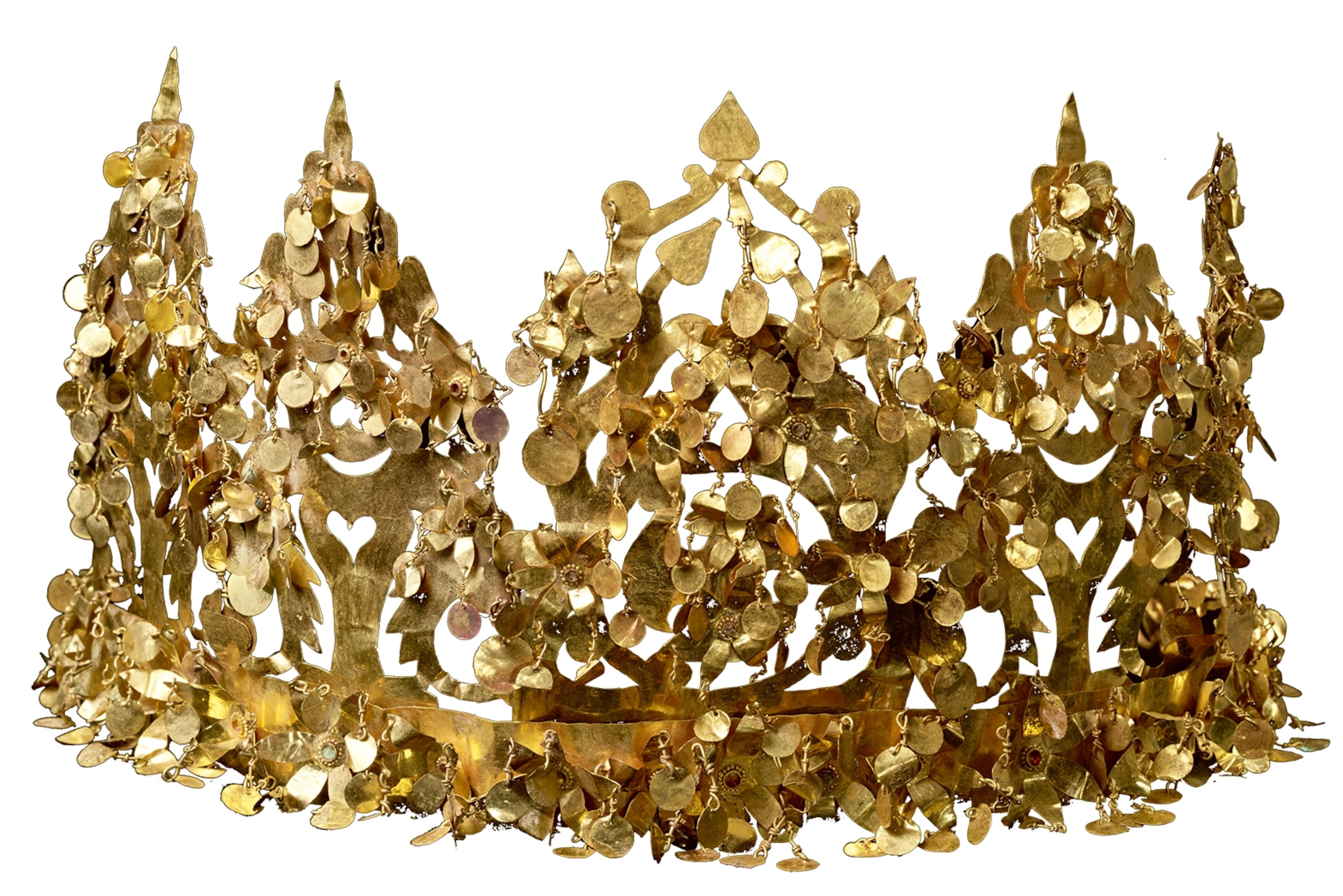
1978
Excavations begin at Tillya Tepe, led by Viktor Sarianidi. The artifacts found are later placed in Kabul’s National Museum.
1979
The Soviet Union invades Afghanistan. An insurgency against the invasion leads to years of war and instability.
1988-89
After the Soviet withdrawal, Afghan society collapses. Authorities protect the hoard by hiding it away.
2003-04
Observed by National Geographic fellow Fredrik Hiebert, the hoard is recovered and returned to the National Museum.
The Golden Hoard
The workers at the site uncovered six tombs, dating from the first century B.C. to the first century A.D. They contained more than 20,000 objects, including golden rings, coins, weapons, earrings, bracelets, necklaces, weapons, and crowns. In addition to gold, many of these were crafted from precious stones such as turquoise, carnelian, and lapis lazuli.
Scholars believe the graves were of six wealthy Asian nomads, five women and one man. The 2,000-year-old artifacts found with them exhibit a rare blend of aesthetic influences (from Persian to classical Greek) and the great number of precious objects found surprised the archaeologists, in particular the intricate golden crown found in the sixth tomb.
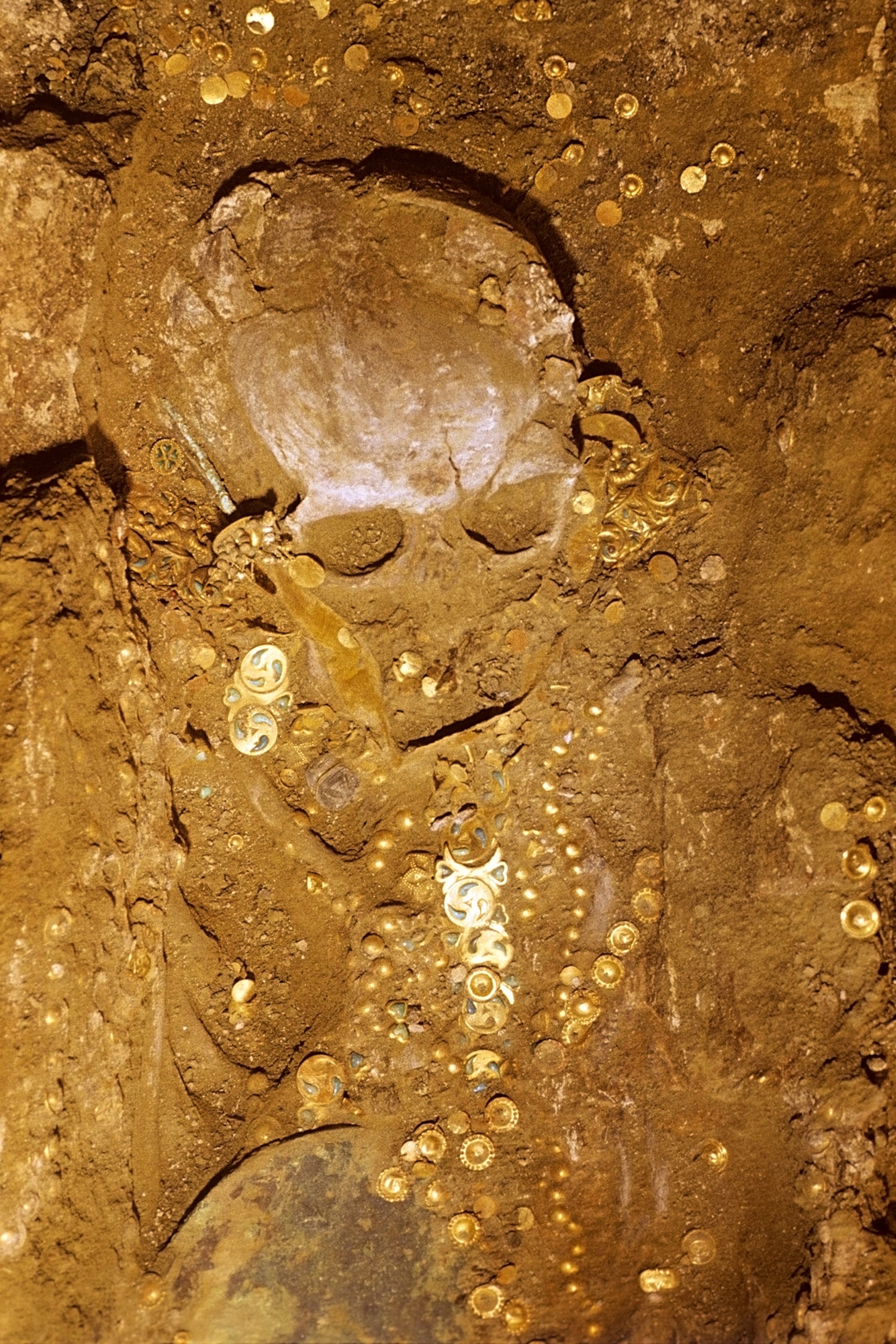
The woman buried with the crown was found lying with her head pointing toward the west. The crown is exquisite, formed of cut-gold trees, each with tiny birds in the boughs, and bearing traits that Sarianidi identified as clearly belonging to a nomadic culture.
At the time of the burials, Bactria was on the Silk Road that linked China with the West, a region crisscrossed by traders carrying goods, ideas, and religions. Sarianidi himself believed that the treasure had been assembled by Yuezhi nobles from China, who arrived in the Bactria region around the second century B.C., and who later established what is known as the Kushan Kingdom in India. Other scholars believe the hoard was interred by Scythians from modern-day Iran. The contesting theories reveal the variety of influences that make up this huge collection of objects. Other items include a Roman coin with the head of the emperor Tiberius, a silver mirror with Chinese engravings, rings with Greek text, and a coin with Buddhist imagery.
Safekeeping
In 1988 the president of Afghanistan, Mohammad Najibullah, made a fateful decision. After years of combat, exhausted Soviet troops were finally withdrawing from the country. Fearing Afghanistan was about to descend into chaos, Najibullah felt that the National Museum of Afghanistan was no longer safe for the Bactrian gold. A select team moved the treasure to a secure hiding place, its members swearing never to reveal its whereabouts until peace was restored. For more than a decade of war and chaos they kept their secret.
In 1993 the National Museum was hit by a missile, and nearly three-quarters of its treasures were looted during the ensuing years. Many Afghans assumed that the Tillya Tepe treasure had shared the same fate, and that this part of Afghanistan’s national heritage had been sold off on the antiquities black market.
In 2003, however, following the overthrow of the Taliban regime, the new Afghan government revealed that the treasure was safe and had been hidden in a vault of the central bank. Carefully cataloged by the National Geographic Society, the treasure was moved back to the newly renovated museum—a rare happy ending for a country that had lost so many lives, and so much of its heritage.
